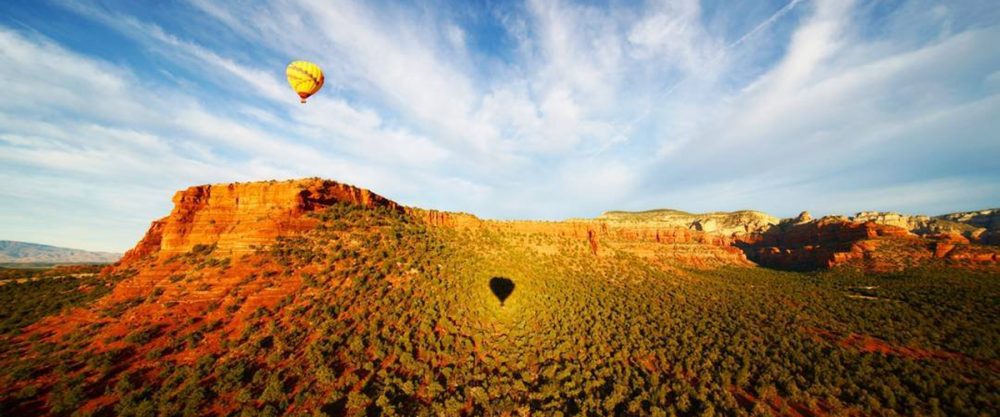Phoenicians help Sedona
AS SEEN IN THE RED ROCK NEWS
May 10, 2019
 Whether the subject is a destination or a brand, marketing is a blend of art and science. In addition to using beautiful images, marketers analyze complex data sets to quantify ROI and target spending effectively. Determining target markets, messaging, mediums and call to actions require a complex mix of expertise, research, data, creativity, art and intuition.So, when people assume reducing summer traffic is as easy as reducing summer marketing in Phoenix, I have to say, “It’s not that simple”. Cutting summer marketing in Phoenix is just as likely to increase day-trip and pass-through traffic and damage our economy.
Whether the subject is a destination or a brand, marketing is a blend of art and science. In addition to using beautiful images, marketers analyze complex data sets to quantify ROI and target spending effectively. Determining target markets, messaging, mediums and call to actions require a complex mix of expertise, research, data, creativity, art and intuition.So, when people assume reducing summer traffic is as easy as reducing summer marketing in Phoenix, I have to say, “It’s not that simple”. Cutting summer marketing in Phoenix is just as likely to increase day-trip and pass-through traffic and damage our economy.
How? Sedona’s red rocks are the gateway to Oak Creek Canyon and a popular route from Phoenix to the Grand Canyon. In the Valley, Grand Canyon promotions encourage a picture-snapping drive through Sedona and Oak Creek Canyon as an inducement to visit the Canyon. That was apparent in 2016 when our US National Park Service celebrated 100 years and Grand Canyon National Park visitation hit over 6.3 million visitors (up almost 2 million visitors since 2014) – many of them travelling through Sedona to get there.
It’s estimated 50 percent of our out-of-town summer traffic is just passing through. Is this statistic surprising to anyone knowing that each road leading to Sedona is a scenic / historic road? In fact, the All-American Road Scenic Byway (SR179) is the highest level of scenic road designation in the country. A National Scenic Byway is a road recognized by the United States Department of Transportation for one of six intrinsic qualities: archeological, cultural, historic, natural, recreational or scenic.
The truly unique and outstanding byways that meet two or more of those essential qualities are designated All-American Roads. There are currently only 31 of them scattered across 28 states from coast to coast. “All-American Roads are simply the best of the best among the remarkable system of Scenic Byways,” says Neil Gaffney, public affairs specialist with the Federal Highway Administration.
And Oak Creek Canyon is the state’s original scenic byway, designated in 1984. Wouldn’t you want to take the scenic route to get to the country’s second most visited national park (only after the Great Smoky Mountains (11.4 million visitors)?
Unless we promote a relaxed, starry overnight stay in Sedona, pass-through drivers add little to our economy but continue to use our roads. With no marketing, the percentage of pass-through traffic goes up, overnight visitors go down, and local spending declines. It’s the worst of both worlds.
The same holds for day trippers. Valley residents come to cool off, enjoy the scenery and be home for dinner. Unless we market an overnight experience, day-trippers use the roads but contribute half that of an overnight visitor (day-trippers spend $293 compared to spending by an overnight visitor of $618).
We learned from last summer’s elimination of Phoenix marketing. We did not see a noticeable decline in traffic or tax revenues, but dozens of businesses reported a sharp drop in sales despite a good economy. They strongly advocate the resumption of Phoenix marketing this year.
When we eliminated Phoenix last summer, we shifted funds to California, a significant source of overnight visitors. But overall occupancy dipped, proving that Phoenix is a viable overnight market and confirming what our lodging partners tell us: Phoenix is their top market for overnight visitation.
With City and ADOT road construction looming, businesses in Uptown have made it clear that Sedona needs to be active in Phoenix this summer. The Chamber Board agrees.
Our $150,000 investment in Phoenix and southern California this summer aims for higher-income households likely to stay multiple nights, appreciate our focus on sustainability, and spend on our many experiences. In the long run, attracting visitors who stay longer and spend more will permit Sedona to thrive with fewer tourists, a key to our sustainability.
Our ROI is excellent. Average visitor stay has increased from 2.1 nights to 3.1 nights in the last several years. Average overnight visitor spending has grown from $500 to $618. Tourism contributes 77 percent of city sale tax revenues, up from 65 percent in 2014.
These trends don’t take care of themselves, however.
Marketing to high-end Valley consumers this summer makes sense for Sedona. Converting warm-weather drivers to overnight guests keeps our tax revenues, city services and employment numbers strong – and our sustainability goals on track.
–Jennifer Wesselhoff, President/CEO

